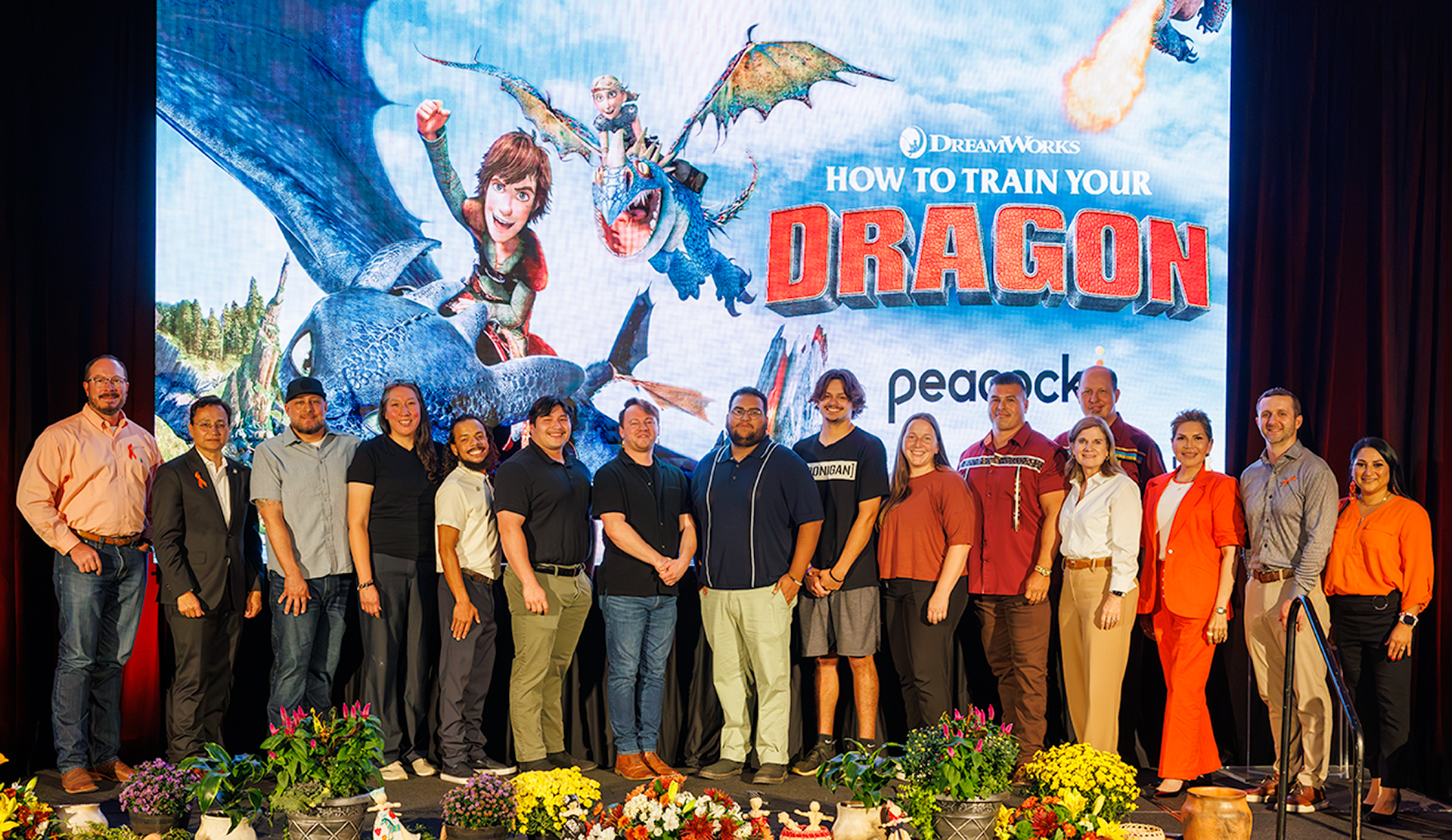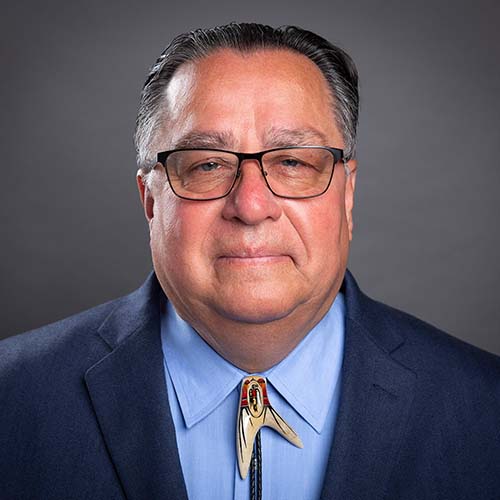
- Details
- By Native News Online Staff
In a historic cultural initiative, the Cherokee Nation has teamed up with DreamWorks Animation and NBCUniversal to produce a Cherokee-language version of the animated film How to Train Your Dragon. The dubbed film began streaming exclusively on Peacock on October 1, marking a major step forward in the tribe’s language revitalization efforts.
Launched in May 2025, the project brought together 15 Cherokee-speaking voice actors and eight fluent translators from the Cherokee Nation’s language office. The collaborative team worked to carefully adapt the beloved film into Cherokee. On September 30, a private premiere was held at the Durbin Feeling Language Center in Tahlequah, featuring a red carpet event attended by Cherokee leaders, voice actors, translators, and students from the Cherokee Language Master Apprentice Program and Cherokee Immersion School.
The initiative reflects the tribe’s forward-thinking approach to preserving and promoting the Cherokee language by integrating it into popular modern media.
“We thank DreamWorks and NBCUniversal for the opportunity to include Cherokee Nation as one of its featured languages that our tribal citizens can access. This is a monumental day for the Cherokee people and the Cherokee language,” said Cherokee Nation Principal Chief Chuck Hoskin Jr. “This movie project represents opportunities for Cherokee speakers and the ability to share the Cherokee language with the world as the tribe continues to advance efforts to teach and share our language. We cannot allow our language to wither on the vine. Without continual efforts we lose that direct tie to our history and culture.”
Deputy Chief Bryan Warner praised the project’s lasting impact:
“The collection of our language into digital media will be here long after we are gone. We want to make sure that our language, and our voices are heard,” he said. “This dubbed film could even be the first time that a Cherokee child hears the language. I think this will captivate the younger audience and get them interested in speaking the language.”
How to Train Your Dragon tells the story of Hiccup, a young Viking on the island of Berk, who defies tradition and befriends a dragon named Toothless. As an ancient threat looms, Hiccup, Toothless, and their ally Astrid must unite their people and prove that courage and friendship can change their world.
Cherokee Nation citizen Hondo Kirk, 23, of Tahlequah, voices Hiccup in the Cherokee version. A graduate of both the Cherokee Immersion School and the Cherokee Language Master Apprentice Program, Kirk brought personal connection and skill to the role.
“It took me a while to get used to Hiccup’s character, but I could relate. He’s very awkward and I can be awkward, and the unique pitch of his voice at first was difficult to capture,” Kirk shared. “I did love this opportunity and do hope I can play more voice acting roles in the future. My ultimate goal is to be an audio engineer.”
Howard Paden, executive director of the Cherokee Nation Language Program, highlighted the broader significance of the effort:
“It was exciting to participate in the dubbing of the film. Allowing Cherokee speakers to participate in major films opens a door and encourages more Cherokee citizens to want to learn the language and do work in the film industry,” Paden said.
This is the second major dubbing collaboration for the Cherokee Nation, following its work on The Lord of the Rings: The Rings of Power.
The tribe estimates there are currently fewer than 1,500 fluent first-language Cherokee speakers over the age of 60. Through programs like the Cherokee Language Master Apprentice Program, the Nation aims to graduate over 25 new second-language speakers each year.
Since 2019, Chief Hoskin and Deputy Chief Warner, in partnership with the Cherokee Nation Council, have directed more than $68 million toward Cherokee language initiatives. In 2024, they signed into law the Durbin Feeling Language Preservation Act, which commits at least $18 million annually to language revitalization efforts.
More Stories Like This
Zuni Youth Enrichment Project and Partners at Ho’n A:wan Productions Launch 8th Annual Delapna:we ProjectChickasaw Holiday Art Market Returns to Sulphur on Dec. 6
Center for Native Futures Hosts Third Mound Summit on Contemporary Native Arts
Filmmakers Defend ‘You’re No Indian’ After Demand to Halt Screenings
A Native American Heritage Month Playlist You Can Listen to All Year Long
Help us defend tribal sovereignty.
At Native News Online, our mission is rooted in telling the stories that strengthen sovereignty and uplift Indigenous voices — not just at year’s end, but every single day.
Because of your generosity last year, we were able to keep our reporters on the ground in tribal communities, at national gatherings and in the halls of Congress — covering the issues that matter most to Indian Country: sovereignty, culture, education, health and economic opportunity.
That support sustained us through a tough year in 2025. Now, as we look to the year ahead, we need your help right now to ensure warrior journalism remains strong — reporting that defends tribal sovereignty, amplifies Native truth, and holds power accountable.
 The stakes couldn't be higher. Your support keeps Native voices heard, Native stories told and Native sovereignty defended.
The stakes couldn't be higher. Your support keeps Native voices heard, Native stories told and Native sovereignty defended.
Stand with Warrior Journalism today.
Levi Rickert (Potawatomi), Editor & Publisher

